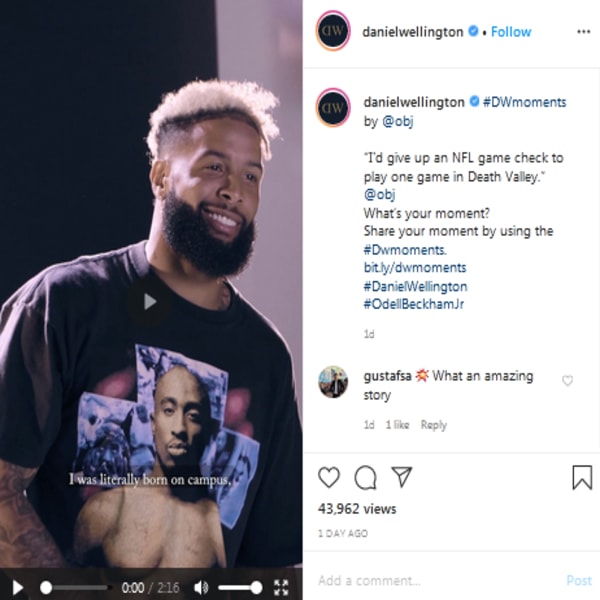Hello!
Social media is here to stay.
Not convinced?
 Check out these eye-popping facts about social media:
Check out these eye-popping facts about social media:
● 3.8 billion people have embraced social media as of Jan 2020.
● The social media global penetration rate was 72.4% in 2019.
● One-third of online time is spent on social networking sites.
No wonder why modern brands and marketers prioritize social media marketing.
Social media marketing offers many benefits.
Your brand gets unparalleled reach and penetration. You can boost your sales by social selling. You also put your brand in front of a broad audience since social media has beaten search engines as the preferred channel for product research. You also get to build your brand reputation and connect with your audience.
Sound impressive?
However, you need a sound social media marketing plan if you want to reap all of these benefits. To help you out, we’ll walk you through the plan-creation process step by step.
Let’s get started.
8 Steps to Create a Super-Effective Social Media Marketing Plan
Creating a social media marketing plan can be daunting, even for experienced marketers. The frequent changes in social algorithms, content consumption patterns, and content creation and distribution methods make it difficult to create a plan that stands the test of time.
However, if you get the following eight steps right, your marketing plan will be in good shape:
1. Identify Your Goals
 All successful marketing tactics have one thing in common: they have well-defined goals. You can’t hope to reach a target that is not clearly visible.
All successful marketing tactics have one thing in common: they have well-defined goals. You can’t hope to reach a target that is not clearly visible.
Your goals will impact all parts of your social media marketing, from the platforms you choose to the content that you create.
So, make sure that your goals are precise and attainable. First, define the larger, long-term goals of your social media marketing. Then, break them down into measurable goals for each campaign or content asset.
If you’re new to social media goal-setting, you should know that 90% of marketers aim to improve brand awareness, 77% to manage their brand’s reputation, and 71% to build tight-knit follower communities.

2. Research Your Audience
It’s pointless to create content if you don’t know who is going to consume it. Take the time to research your target audiences and create detailed buyer personas.
You can use tools to “listen” to your audience and learn about things like:
- What are their pain points and interests?
- Which platforms do they favor?
- What kind of content do they like?
- What do they think about your brand?
Web and social media analytics will reveal your audience’s age and gender demographics and location distribution.
Google Analytics’s Segment Builder can help you drill down into granular details about each user. You can create custom reports like high-value users and brand affinity.
Based on your findings, you can decide on the platform that you want to target and the content that you want to create. You will also get a good idea about the kind of influencers you should collaborate with.
For instance, if your brand’s target audience is teenagers who are avid music lovers, a music-streaming platform like Spotify will be the best bet for you. Similarly, if you want to attract gaming fans, Twitch influencers can get you the right reach.
3. Understand Your Brand Personality
Your brand personality means the way you communicate with your customers. It shapes the way people view your brand. Your personality should be reflected in all of your social content, including posts, comments, and ads.
But why is branding important?
 There are three reasons:
There are three reasons:
- Authenticity inspires trust from 86% of consumers. A strong and unique brand personality helps your brand come across as authentic.
- Consistent branding can improve your revenue by 33%.
- Repeated exposure to the same branding can help create a memorable impression on consumers. Your brand will get a top-of-mind advantage when consumers make purchase decisions.
For example, a brand which targets nature lovers should talk about sustainability and have an empathetic tone. On the other hand, a brand which caters to the C-suite demographic should adopt a sophisticated, businesslike tone.
Take a cue from Nando’s, which has a huge fanbase made of Gen Zers and millennials. The brand uses humor liberally in their social content. Their tone is fun and quirky since it appeals to younger consumers.
Consumers expect brands to display a consistent brand personality. So, create a style guide that defines elements of your branding, such as colors and tone. It will help you to stay true to your brand personality across multiple social accounts.
4. Research Your Competitors
 It’s always a good idea to keep an eye on the content your competitors are producing.
It’s always a good idea to keep an eye on the content your competitors are producing.
The aim is not to replicate what they are doing. Rather, you can refine your own strategy by avoiding the mistakes your competitors have committed. Or, you can take a completely different route and create a unique content campaign for yourself.
Take Rolex and Daniel Wellington for example. Both are luxury watch brands. However, their content has many differences.
Rolex’s Instagram grid is full of pictures and posts about their range of watches. They create content pivoting around their range of watches. Though they sometimes feature influential people wearing their watches, the focus is always on their product.
In sharp contrast, Daniel Wellington’s content strategy revolves around influencer content and user-generated content. They put consumers and influencers in the spotlight and weave their product into the storyline.

We can’t really say which brand nailed their social media marketing better. The point is that their contrasting approaches set them apart from their competitors in the same niche.
5. Craft Engaging Content
You’ve done all the groundwork by identifying your goals, target audience, and brand personality. Next comes the content creation stage.
Content is the heart of your social media marketing. Great content can convert random visitors into loyal followers and promoters of your brand.
The kind of content you need to produce depends on the platforms you choose and the tastes of your audience. Instagram is great for short video clips and visual-rich content. YouTube is best suited for long-form videos while Spotify works well for podcasts.
 If you’re short on content ideas, try these formats:
If you’re short on content ideas, try these formats:
- Polls
- Contests
- Live videos
- Ask Me Anything (AMA) sessions
- Podcasts
- User-generated content (Here you may find 6 key elements to enhance user-generated content on social media. Enjoy!)
- Memes
- Behind-the-scene (BTS) videos and pictures
- GIFs
- Blog posts
- Infographics
- Virtual panel discussions or webinars
You can pick the content type that is aligned with your industry, platform, and audience preferences.
We understand that creating great social media content from scratch can be overwhelming. You need to get minute details (such as color and tone) right so that your content strikes a chord with your audiences.
Want to know a clever way to reduce the slog work and still get great returns?
 Repurpose high-ranking content into new formats and repost on different platforms. For example, you can create an eye-catching infographic from a blog post. Or you can convert a podcast interview into a how-to guide or ebook.
Repurpose high-ranking content into new formats and repost on different platforms. For example, you can create an eye-catching infographic from a blog post. Or you can convert a podcast interview into a how-to guide or ebook.
By repurposing content, you not only save time and effort but also eliminate risk that comes with creating new content.
Copyblogger is known for their high-quality content on copywriting. They have also perfected the art of repurposing content. They converted one of their blog posts, The 3-Step Journey of a Remarkable Piece of Content (www.copyblogger.com/remarkable-content/), into a SlideShare presentation and published it on LinkedIn.
The deck has garnered 86K+ views till date.
6. Set a Posting Schedule
We advise that you maintain a consistent posting schedule. The posting frequency and timing are critical if you want your content to get maximum engagement and exposure.
While experts swear by frequent posting, it all depends on your budget, time availability, and platform guidelines. But it pays to be disciplined.
Once you figure out the best times to post, set a comfortable posting schedule. Adhere to the schedule so that your followers come to rely on your content.
If you own or work for a startup or small business, budget constraints present a real challenge. You just don’t have the resources to invest in a full-fledged content team that churns out content multiple times a day.
You should take advantage of open-source tools for social media management. You’ll never miss a posting deadline and you’ll be notified when your content is posted. Then, you can start tracking the engagement.
7. Market Your Content
Just creating great content is no good if you don’t promote it well. Initially, you might have to invest in social ads to get traction. Though the cost of social ads varies across platforms, we can tell you they are expensive.
If you opt for ads, try to cap your bids. Start by manual bidding to avoid overshooting your budget.
Apart from ads, use email marketing to spread the word about your social content. Email marketing returns $40 for every $1 spent.
In your newsletters, you can create content digests with URLs pointing to your social posts. In this way, you can redirect traffic from your inbox and website to your social accounts.
8. Measure Your Campaign Performance
 The last but perhaps most important step is to evaluate your marketing performance.
The last but perhaps most important step is to evaluate your marketing performance.
From the goals you identified in step 1, you’ll know the metrics you need to measure now.
For example, if improving follower engagement was your goal, your ideal KPI is the number of comments and shares that your posts get.
At the end, I’ll share a pro tip to ace social media marketing. Don’t get dejected if your numbers are less than perfect. Perseverance pays. Try a different content format or posting schedule. You’re bound to see results with consistent efforts.
Final Thoughts on Creating a Social Media Marketing Plan from Scratch
Succeeding in social media marketing is no fluke. You need a solid game plan in place. The process I’ve outlined in this post will give you a great head start. Social media marketing can be a dynamic support system that will forge your branding strategy, attract the right leads, and eventually drive conversions. On the other hand, if not planned carefully, it can be daunting, messy, and might be a waste of time. The key is to know how to strategize, develop, create, execute, and take the time to measure your overall plan.
Pay attention to the selection of top articles on Quasa Media:
- 6 Ways to Promote Your Content on Social Media That Have Been Neglected
- 10 Content Marketing Tactics for your Startup Blog
- Common Social Media Marketing Mistakes to Avoid
- What is Influencer Marketing and How to Work with Social Media Influencers?
- Marketing Plan for a Succeeding LMS Launch
Thank you!
Subscribe to our newsletter! Join us on social networks!
See you!






